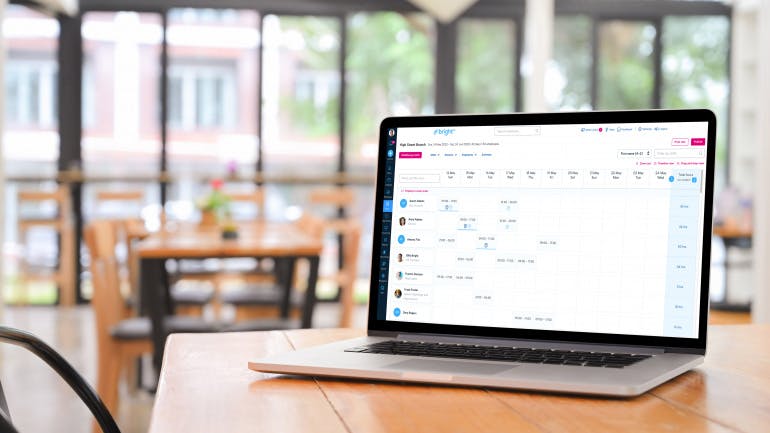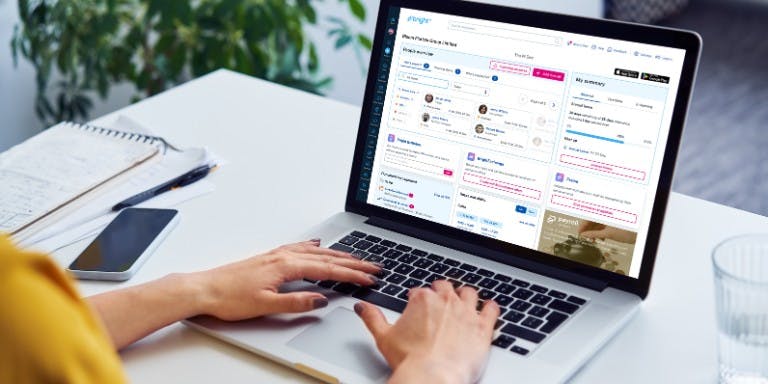First published on Wednesday, June 5, 2024
Last updated on Monday, November 18, 2024
Managing a massive team of people isn’t straightforward. It’s something businesses have to dedicate enormous resources to achieving, including whole departments of skilled professionals.
However, as with most process-oriented aspects of business, software is riding to the rescue.
HR software and apps are tools organisations can use to streamline human resources-related processes and manage most repetitive tasks. With them, companies can better manage their people’s data and enhance employee engagement.
So, let’s explore what HR software is in more detail. We look at some of the features the best tools include and how some ancillary tools, like HRIS and HRM, relate to it.
What is the purpose of HR software?
Human resources (HR) software has multiple organisational roles that vary according to operational requirements. For some, the primary objective is to reduce routine administration; for others, it’s to cut staff turnover.
Time-saving
Virtually all bussineses use HR tools to save time. They centralise document and form management, reducing the need for archiving, physical filing, emailing, and desktop paperwork. Cloud solutions (discussed later) bring everything into a single distributed repository, accessible from anywhere.
As such, it becomes more straightforward to complete HR tasks. Staff can access apps from any location (including at home), facilitating remote operations and flexible working.
Consolidates resources
HR software also help by consolidating employee handbooks and policy documents. Staff can view company requirements through a single portal instead of trying to locate rules and regulations through disparate channels.
Because of this, it’s faster and easier for employees to access the required information. Staff don’t need to wade through multiple versions to find the most recent information—it’s all updated for them online by central administrators.
Imported reporting
HR’s final purpose is to improve reporting. The software automatically updates and generates reports on various HR metrics, including staff absences and compensation. Managers can enter performance review information into these systems for better tracking over time, using it as a basis for bonuses, promotions, or disciplinary action.
Reporting also enables company-wide analysis and evaluation. Managers are in a better position to determine whether HR policies and initiatives are working, or if they need to change tack.
For instance, data might show flexible working leading to productivity and staff performance improvements, information critical for establishing permanent working changes at the board level or assuaging shareholders.
Essential features that all good HR software should incorporate
When shopping for HR software, you should check solutions that include the features you need. Not all HR software providers offer comprehensive suites of services for modern business operations.
Essential features include:
Time-tracking
HR tools should let your employees clock in and out of work, track their breaks and submit timesheets. Systems should offer this functionality remotely to reduce HR staff burdens.
As a bonus the best HR software provider should also offer shift and rota planning, that alows you to create rotas, track attendance and fill open shifts.
Employee self-service
Your staff should be able to access their personal information and edit pre-authorised fields (such as their contact information). Workers should also have access to basic employment information, such as annual leave allowance, employee handbook, and workplace policies, with tools to request HR changes if details are incorrect.
Absence management
HR tools should give your employees the power to request time off from work remotely (including from home) and managers should be able to sign them off.
This means that the best HR software provider should offer some form of absence management tool that provides tracking to see how much time employees are taking off. Plus, the software should come with staff holiday planning tools to prevent scheduling conflicts.
Payroll processing
HR software should provide the functionality to streamline payroll tasks. From generating automated payroll reports using timesheets, absence, and holiday information to seamless integrations with Payroll software.
Document storage
Lastly, good HR software includes storage facilities to keep resumes, contracts, and staff handbook information—like BrightHR’s unlimited cloud-based storage. This data should be accessible anywhere to anyone with the proper login credentials.
Is HR software the same as HRIS and HRM?
HR software is the same as HRIS and HRM broadly speaking, but there are some subtle differences. As a business, you’ll want to consider these before choosing any solution.
Human resource information system (HRIS) is an HR software subtype that deals mainly with managing employee data (such as hours of work, contact details, and salary). As such, it’s not as comprehensive as most HR suites and tends to offer older processes.
By contrast, human resources management (HRM) software has more to do with recruitment and talent management. It tracks the employee acquisition process and helps with professional development (to reduce turnover).
Top HR tools, like BrightHR, combine elements of both. Staff data and employee relations features can help human resources departments adopt more rounded approaches.
Differences between HR software and online, or cloud-based HR software
Some HR software remains downloaded and installed on local machines. Others are available in the cloud and accessible from anywhere. In most cases, firms benefit more from the latter than the former.
Here are some key differences between conventional on-site HR software and cloud-based alternatives showing why:
Accessibility
Traditional HR tools are only accessible on specific organisation computer terminals (usually in-office). Cloud-based systems are available from any location or device, including staff laptops and smartphones.
Updates
Traditional HR systems require manual updates or downloads. Online and cloud-based versions patch automatically (with the difficult parts done by the vendor, not the client).
Scalability
Traditional HR systems can be challenging to scale, requiring additional licenses for extra terminals. Online and cloud-based systems simply require moving to a new subscription to reflect changing user numbers.
Some, like BrightHR don't charge extra if your business grows and more users are required.
Cost
Traditional HR solutions require you to pay most software fees upfront. However, with cloud-based solutions, you pay for services on-demand on a subscription basis. You can even get a return on investment with HR software solutions that are cloud-based, like BrightHR:
Discover BrightHR’s cloud-based HR software
Now you know what HR software is and why businesses use it. You can see that it's essential for managing staff, increasing efficiency, and automating routine tasks.
But, thats not all it can also save you time, money, and stress.
The best tools are online and cloud-based, offering a combination of HRIS and HRM for more comprehensive coverage. And that's what BrightHR offers.
Explore BrightHR’s features today to see how they could help your business thrive.
Or if you want to talk to an advisor book a free HR software demo today!










